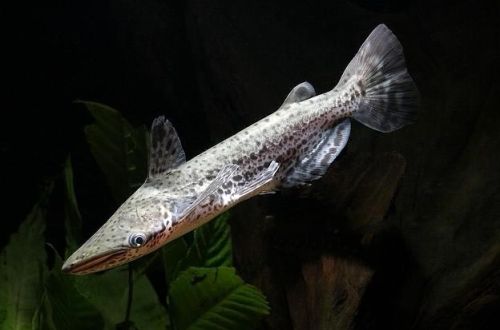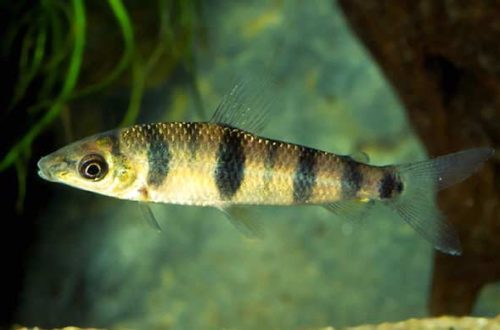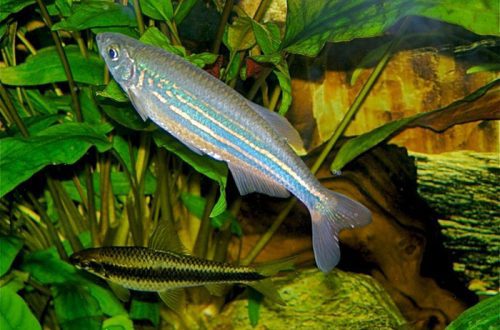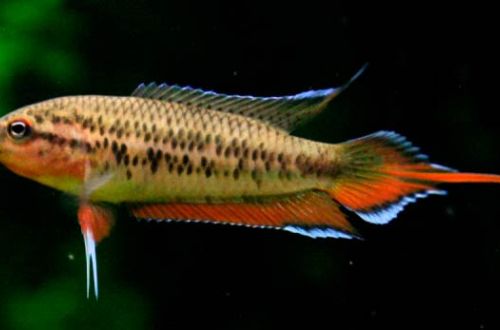
Guyanese catfish
Hammerhead catfish, Guyanese catfish or marbled Ageneiosus, scientific name Ageneiosus marmoratus, belongs to the Auchenipteridae family. A small beautiful fish. Unlike most catfish, it leads an active lifestyle and does not constantly hide in shelters. It belongs to carnivorous species, which introduces some difficulties in keeping.

Contents
Habitat
Comes from South America. The natural habitat covers a significant part of the Amazon basin from the headwaters of the river in Peru to its delta on the coast of Brazil. Also found in neighboring river systems in Guyana and Suriname. According to most sources, this type of catfish prefers the lower reaches of rivers with a slow current.
Brief information:
- The volume of the aquarium – from 120 liters.
- Temperature – 22-26°C
- Value pH — 6.0–7.5
- Water hardness – 3–10 dGH
- Substrate type – sandy
- Lighting – subdued
- Brackish water – no
- Water movement – light or moderate
- The size of the fish is up to 18 cm.
- Meals – meat products or live fish
- Temperament – predatory, but peaceful
- Content alone or in a group
Description
Adults reach a length of up to 18 cm. The fish has an elongated body and a wide flat head with a large mouth. During the breeding season, males exhibit the so-called “occipital hump”. The area behind the head rises somewhat and subsides at the end of spawning. Otherwise, sexual dimorphism is weakly expressed, males and females do not have obvious visible differences. The coloration is gray with a spotted pattern throughout the body. Young fish are lighter, and the pattern consists of larger spots that merge into stripes, somewhat reminiscent of the pattern on marble. A similar feature of coloration is reflected in the name of the species.
Food
In nature, they feed on invertebrates, small crustaceans and, on occasion, other small fish. In a home aquarium, the diet should consist of similar live foods, some catfish are accustomed to dry food intended for carnivorous species. It is worth noting that many exported fish often refuse alternative products, requiring live food. Before buying, be sure to clarify the features of the diet.
Maintenance and care, arrangement of the aquarium
The hammerhead catfish is quite active, in the presence of large neighbors it can behave shyly, so a spacious aquarium should be considered a necessary condition for a successful one. For one individual, a volume of 120 liters is required. The format doesn’t really matter. However, the most favorable environment is one that resembles a river bed – a sandy substrate interspersed with stones and a certain amount of snags. The lighting is subdued.
Efficient filtration is a must when keeping carnivorous fish because of the large amount of waste they produce, which greatly pollutes the water. It usually consists of a combination of external canister filters and a sump system with water return. In addition to cleaning, part of the water should be replaced with fresh water once a week with a volume of at least 30-50% to prevent the accumulation of organic decomposition products.
Behavior and Compatibility
Peaceful moving fish. Non-aggressive bottom-dwelling species that will not compete with Guyanese catfish for food are perfect as aquarium neighbors. At the same time, we must not forget that any fish that can fit in his mouth can become an accidental “lunch”.
Breeding / breeding
At the time of writing, no successful cases of breeding in home aquaria have been recorded. They are sold for sale by catching from natural reservoirs or from commercial fish farms, where spawning is stimulated with the help of hormonal injections.
Fish diseases
The cause of most diseases is unsuitable conditions of detention. A stable habitat will be the key to successful keeping. In the event of symptoms of the disease, first of all, the quality of the water should be checked and, if deviations are found, measures should be taken to correct the situation. If symptoms persist or even worsen, medical treatment will be required. Read more about symptoms and treatments in the Aquarium Fish Diseases section.





